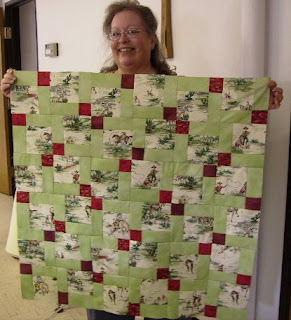

This was our world this morning when we awakened. (We drove through some ugly blowing snow on our way home for praise band practice last night; fortunately, it had not yet begun to stick.) Although Accuweather says we've received only 1.2 inches, they measured it somewhere other than here. When I awoke there were 4 to 5 inches atop my neighbor's wall. At 10:50 a.m. there are still two inches sitting atop the tree branches. When I opened the door to take a picture the tree was full of fluffy birds puffing their feathers for warmth. Some flew away, but others decided to stay right where they were. We've had sun and snow off and on.
We desperately need the moisture; the slow moisture from melting snow benefits us more than rain that just runs off to the low spots. That said, I don't think I'll trek out to our storage building to retrieve spring clothes today. (I did trek out with the garbage bin and got snow in my shoes; we'll see if the garbage truck arrives; nothing seems to stop that huge thing! We have the ruts to prove it!)
(I did trek out with the garbage bin and got snow in my shoes; we'll see if the garbage truck arrives; nothing seems to stop that huge thing! We have the ruts to prove it!)
On Monday Alex and I met our long-time friend Selma for brunch. She was on a solo get-away through the Four Corners area. Lovely visit. Lovely lady!
 (I did trek out with the garbage bin and got snow in my shoes; we'll see if the garbage truck arrives; nothing seems to stop that huge thing! We have the ruts to prove it!)
(I did trek out with the garbage bin and got snow in my shoes; we'll see if the garbage truck arrives; nothing seems to stop that huge thing! We have the ruts to prove it!)On Monday Alex and I met our long-time friend Selma for brunch. She was on a solo get-away through the Four Corners area. Lovely visit. Lovely lady!
































